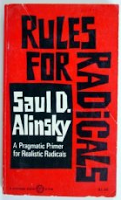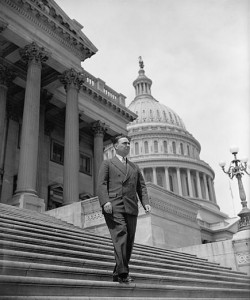Today, Chairman Ben Bernanke gave a big speech on the Federal Reserve’s next move in Boston. During his speech, Bernanke announced yet another round of “quantitative easing”. In plain English, this means that the Fed will fire up their printing presses to create more money. This likely won’t end well.
Federal Reserve System
Several monetary institutions appeared in the United States prior to the formation of the Federal Reserve System, or Fed. These were, in order: the constitutional gold (and bimetallic) standard, the First and Second Banks of the United States, the Independent Treasury, the National Banking System, clearinghouse associations, and the National Reserve Association. The Fed was the last such institution founded. Although it has endured, the present-day Fed would be unrecognizable to its founders.
Federal Reserve
What is the Federal Reserve System?
The Federal Reserve System, often referred to as the Federal Reserve or simply “the Fed,” is the central bank of the United States. It was created by Congress to provide the nation with a safer, more flexible, and more stable monetary and financial system. Over the years, its role has evolved and expanded.
When was the Federal Reserve created?
The Federal Reserve was created on December 23, 1913, with the signing of the Federal Reserve Act by President Woodrow Wilson. The act had been drafted as House Resolution 7837 by Representative Carter Glass (D-VA), incoming chairman of the House Banking and Currency Committee.
Summary of Saul Alinsky’s “Rules For Radicals”
Union organizers are often highly trained. In many unions this training includes indoctrination in Saul Alinsky’s “Rules for Radicals.”
Saul Alinsky was a ruthless radical organizer. He would stop at nothing to win. Before he passed away in 1972 he published a book called “Rules for Radicals” in which he outlined his power tactics and questionable ethics.
Anyone interested in staying, or becoming, Union Free, whether in an organizing campaign or in a decertification or deauthorization election, ought to become familiar with these rules.
The Winner: Rush Limbaugh
“I hope he fails.” With those famous four words, uttered January 16, 2009 — only days before Barack Obama was to be inaugurated — Rush Limbaugh drew a line in the sand.
And as a result, this morning it is Rush Limbaugh who is the undisputed winner of the 2010 election. The White House is repudiated. The Pelosi-run House of Representatives, supported by the Democrats’ Congressional Campaign Committee, also deliberately targeted Limbaugh. Speaker Pelosi is, abruptly, now history. The Senate is richer by a still-undetermined number of conservatives as this goes to Internet press.
Why Marco Rubio’s Win Is the Most Important One for Conservatives
Once you get past the fundamental qualifications of basic honesty and credibility, there are three ingredients, it seems to me, that make for a successful conservative leader.
The first (this should be obvious) is a solid conservative political philosophy. The second is charisma (like it or not, Americans prefer charismatic candidates, and it has become mandatory for the modern era).
Election Day Peptalk: America The Indestructible
No time to go wobbly: The Broadway Musical’s greatest Star fires up America’s greatest President…and all the rest of us. “You can do it, all you need is a hand…”
Top 10 Historic Midterm Elections
While not as memorable or studied as much as presidential campaigns, the midterm elections also stand as pivotal moments in U.S. history. Congressional elections, usually held in the middle of a president’s term, are usually a referenda on a president and his policies.
Dave Leip’s Atlas of U.S. Presidential Elections
Dave Leip’s Atlas of U.S. Presidential Elections was started as a paper hobby after the 1992 Presidential Election. I was 22 and attending graduate school at MIT. I made a photocopy of a U.S. map (with county boundaries) from one of the libraries and filled in counties with colored pen according to the winner. There were only two percentage points – above 45% and below 45%. I used the data for Perot, Clinton, and Bush that was published in the 1993 World Almanac and Book of Facts (there were no minor party data).







